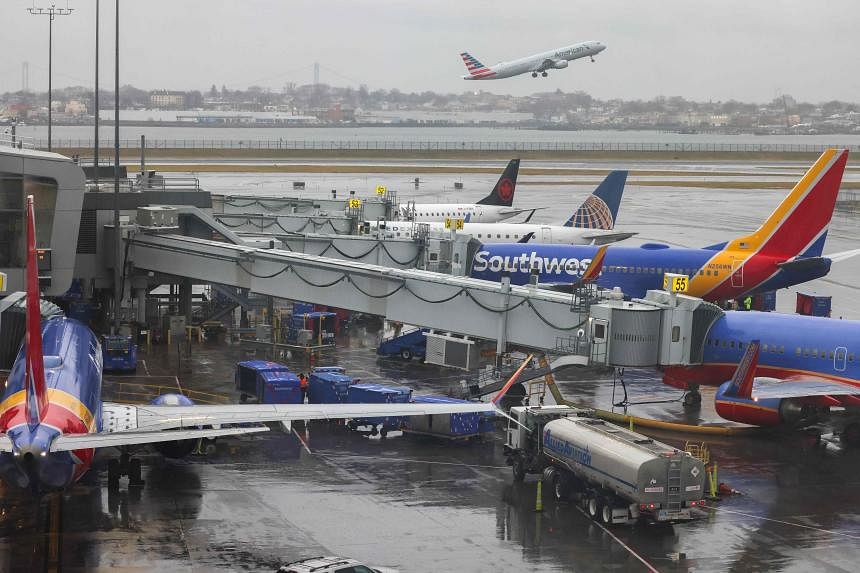News Analysis
No-frills flying emerges as air travel’s painful, greener future

SYDNEY – Densely packed aircraft, little legroom and no free drinks. It is starting to look like the uncomfortable reality of global air travel for more and more passengers as airlines race to decarbonise.
The spartan cabins and fuss-free service of low-cost carriers appeared half a century ago, a makeover that made flying affordable to the masses. Since Southwest Airlines first took off from Dallas in 1971, dozens of budget peers including Ryanair Holdings, AirAsia and India’s IndiGo have emerged to take on more pricey legacy carriers.
With global air travel almost completely recovered from the pandemic, cutting emissions is once again the industry’s No. 1 challenge. The low-cost, low-luxury business model that democratised air travel in recent decades has now become an unlikely template for reducing pollution.
This is because budget airlines’ obsession with lowering weight in order to save fuel – by installing paper-thin seats, ripping out business-class thrones and ditching heavy extras like booze and blankets – also happens to produce the best emissions metrics in the skies.
The five airlines in the world that emit the fewest pollutants per passenger are all low-cost carriers, according to data from carbon-reduction advisory firm Envest Global.
Wizz Air Holdings, the Hungary-based carrier that mostly serves Europe and the Middle East, leads the pack. Major brands including Delta Air Lines, Cathay Pacific Airways and British Airways, which is owned by IAG, belch out almost twice the amount of emissions for every passenger they carry, the data shows.
It is grim news for those accustomed to turning left as they board their flights, the traditional path to roomy premium seats. With a 2050 deadline looming for aviation to reach carbon neutrality, the emissions data suggests that airlines, in fact, need to jam more passengers onto their aircraft, give them less space and cut back on food and drink to make flying sustainable.
“This low-cost model is aligned with the central elements of a low-carbon strategy,” said Envest Global chief executive officer David Wills. “Everything is designed to minimise fuel cost per passenger.”
Without an overhaul, aviation will not achieve its mid-century emissions reduction goals. Its share of carbon dioxide (CO2) output is set to balloon as other segments decarbonise – to an estimated 22 per cent by 2050 from about 2 per cent today if emissions are not cut fast enough. The aviation industry is “not on track” to hit its net-zero target, the International Energy Agency says on its website.
Looming threats
Airlines that fail to take sufficient action risk fines and tighter regulation. Fuel levies are already being rolled out in Europe, a jurisdiction that is leading efforts to make flying kinder to the environment.
Seats in the business- and first-class sections of aircraft cabins generate larger carbon footprints for their occupiers because they take up more space and are heavier than economy berths.
For example, a passenger in coach flying from Hong Kong to Singapore in an Airbus SE A350 would rack up 170kg of emissions, according to the International Air Transport Association’s carbon calculator. The same trip in business class generates 682kg. A ride in premium economy produces 256kg.
Every extra passenger that airlines can squeeze into the plane, and every kilogram they can strip from the cabin, helps to cut each customer’s individual carbon emissions.
Budget carriers have turned this ruthless science into an art form. Ryanair in 2009 explored the idea of tearing out seats to create a standing cabin where more people could be packed in. Before the pandemic, Philippine budget carrier Cebu Pacific was moving kitchens and bathrooms on some of its new Airbus SE A330neos to cram in a record 460 seats. Low-cost carriers routinely fit out planes with non-reclining seats sans entertainment screens to cut down the weight of materials.
Dirty downside
It may be fuel-efficient, but the budget flight movement has also driven a boom in air travel demand because of the bargain ticket prices. Low-cost carriers were responsible for almost 90 per cent of growth in fuel use and CO2 emissions from United States airlines between 2005 and 2019, according to the International Council on Clean Transportation (ICCT). Fuel efficiency improvements by budget carriers just could not keep pace with their passenger growth, the ICCT said.
The task facing airlines, regulators and governments is to harness more widely the fuel efficiency of low-cost carriers and still keep a grip on demand-driven emissions, according to the ICCT. Burning smaller volumes of dirty fuel is critical because the aviation industry’s plan to switch to sustainable fuel is far from assured. Current production capacity of this cleaner-burning power source is barely 1 per cent of aviation’s global fuel requirements, and passenger numbers are projected to double from 2019 to more than eight billion in two decades.
“How can we nudge more airlines to adopt low-cost carrier efficiency measures while ensuring that lower fares don’t turbocharge demand?” said Dr Dan Rutherford, director of research at the ICCT.
It is time for more punitive measures, according to Dr Rutherford. There is “clearly” a need for policies such as a tax on frequent fliers or a price on carbon, he said. BLOOMBERG
Bagikan Berita Ini














0 Response to "No-frills flying emerges as air travel's painful, greener future - The Straits Times"
Post a Comment